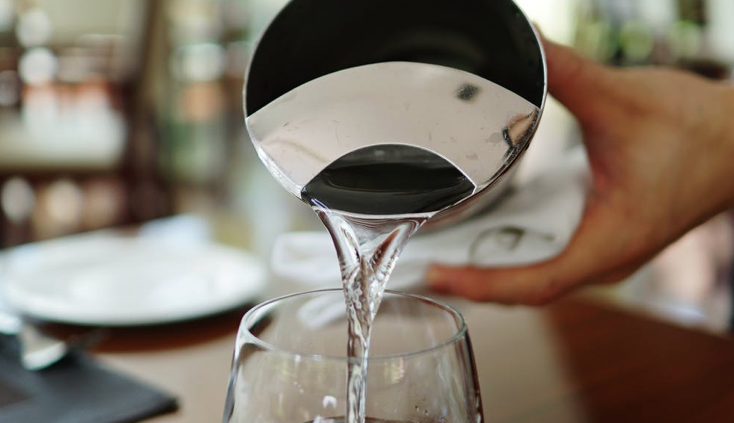Reverse osmosis – the fine membrane for pure water
A reverse osmosis system works with a principle from nature. Osmosis is a process in which a liquid migrates through a membrane. The easiest way to explain this is with an example. You may have noticed that ripe cherries burst on the tree after a downpour. This is due to an osmosis process.
Rainwater collects on the skin of the cherries, inside they are full of sugar water. The property of water is that it wants to balance the concentration of dissolved substances. As it migrates inside the cherries, the sugary solution is diluted and thus more similar to rainwater. But the skin of the cherries doesn’t last long – it bursts.
A natural principle for clean water
This principle is reversed for water treatment, which is why it is also called reverse osmosis. While with natural osmosis the purer rainwater flows to the water “polluted” with sugar, with reverse osmosis the polluted water flows to the pure water. The “contaminated” water has to pass through a fine membrane. Basically, it’s a filter. The pores are so small that only water molecules can pass through. All foreign substances such as minerals, bacteria, drug residues or heavy metals are filtered out.
However, reverse osmosis is not as simple as it sounds. The principle forces the water to act contrary to its natural laws. The process does not take place “voluntarily”. The water has to be pressed through the membrane with a high expenditure of energy. It takes a lot of time until the small water molecules are perfectly cleaned. Therefore, from an energy and time ecological point of view, it would not make sense to treat all the water for the household in this way. Reverse osmosis devices are usually installed under the sink, with many having a second water tap installed on the sink. Only the water used for drinking and cooking is purified using reverse osmosis. The method is not suitable for protecting technical equipment such as washing machines or boilers from limescale deposits.
Perfectly prepared – but primarily no drinking water
Osmosis water has similar properties to distilled water. It is mostly used for medical or technical purposes. If you want to drink the water, it must first be enriched with minerals. Straight from the reverse osmosis system, it really only consists of hydrogen and oxygen, which is not necessarily good for the human body. The pH of the water becomes acidic, which is bad for pipes and plumbing in addition to health issues.
The problem with reverse osmosis is the high running costs. The filtered out substances must come with plenty of drinking water flushed out of the system. How much wastewater is created naturally depends on how much is filtered out. Thumbs up pi it can be said that for one liter of osmosis water around three liters of drinking water are required for rinsing. Regular maintenance is necessary for this. Otherwise the membrane runs the risk of germinating. If the system is not properly maintained, the filtered substances can be concentrated back into the water. This risk is increased if the system is not in operation for a long time. In such a case, the membrane should be replaced.
If you get thirsty quickly, a reverse osmosis system could take your nerves. An average device takes between five and ten minutes to produce one liter of treated water.



